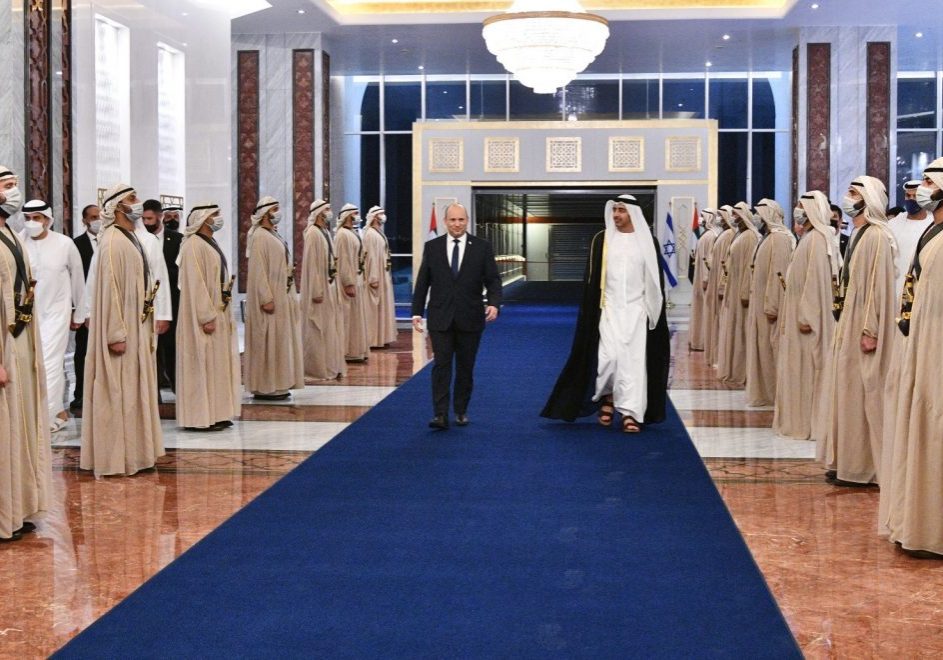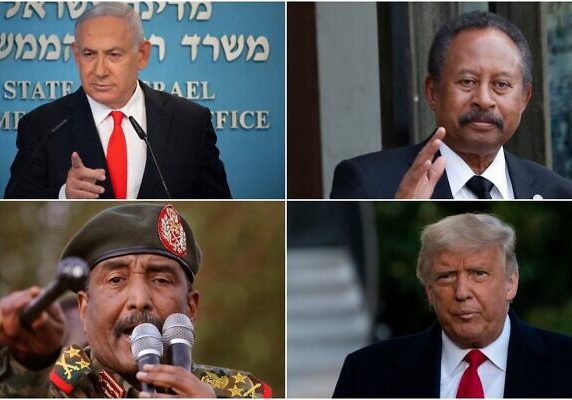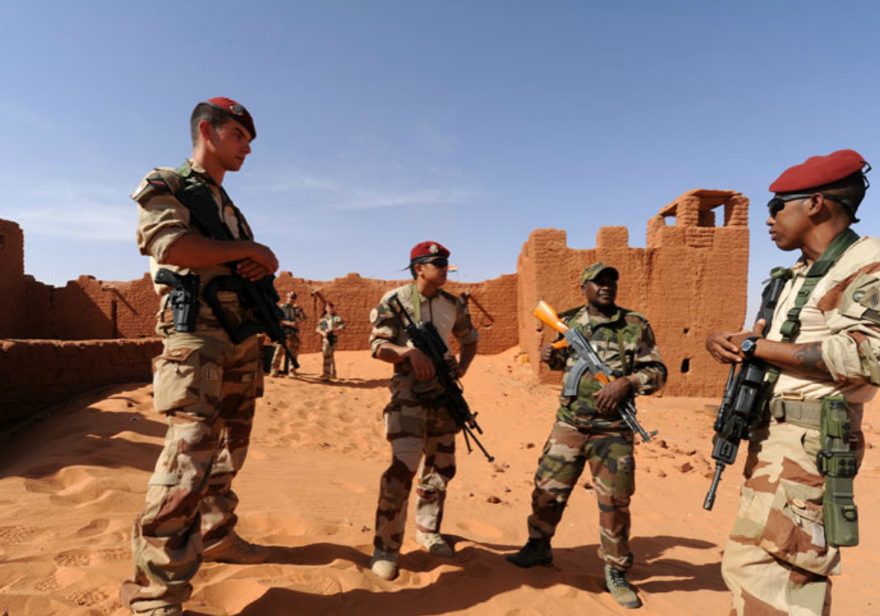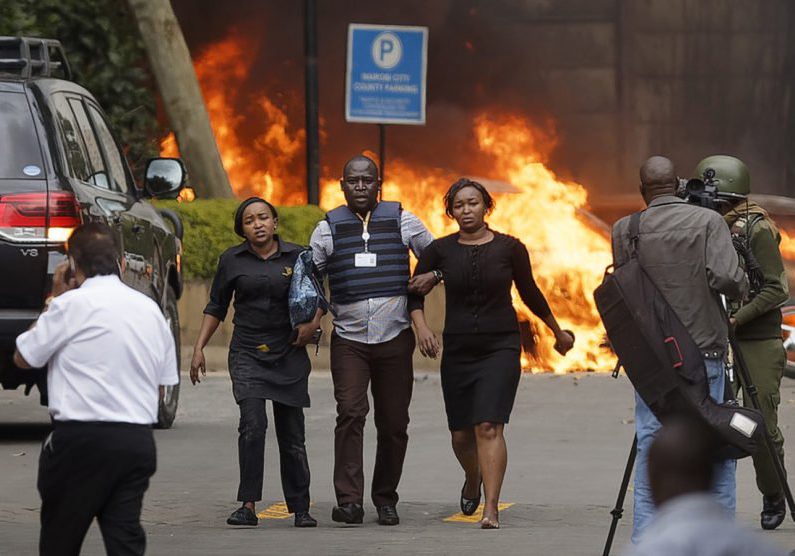Australia/Israel Review
Essay: Somalia’s al-Shabaab
Nov 24, 2009 | Daveed Gartenstein-Ross
By Daveed Gartenstein-Ross
[Ed Note: In August of this year, the Australian Federal Government listed the Somalia-based group al-Shabaab as a terrorist organisation under both its Criminal Code, and the Charter of the United Nations Act. These two measures make it illegal in Australia “to be a member of, associate with, train with, provide training for, receive funds from, make funds available to, direct or recruit for Al-Shabaab.” The Government’s decision followed allegations that five men accused of planning to attack Sydney’s Holsworthy Army Barracks had links to al-Shabaab. Below, American terror expert Daveed Gartenstein-Ross reviews the history, development and capabilities of this new al-Qaeda-linked group.]
Since emerging from an era of colonialism under Italy and Britain, Somalia has passed through military dictatorship, famine and civil war to regional fragmentation. In the modern period, Americans best remember the loss of US military personnel that followed attempts to secure order in the country as part of a United Nations operation. More recently, the hijacking of ships by pirates operating from the Somali coast has attracted considerable attention globally. But the biggest threat emanating from Somalia comes from a different source: an ongoing lack of internal order has left the country vulnerable to the rise of hard-line Islamist groups, of which the latest is al-Shabaab (the youth), which rose from obscurity to international prominence in less than two years. Al-Shabaab’s ideological commitment to global jihadism, its connections to al-Qaeda, its military capabilities, and its ability to capture and control territory suggest that it will continue to pose a strategic challenge to both the US and Somalia’s neighbours.
Since its emergence, al-Shabaab has played a major role in the insurgency that pushed Ethiopian forces out of Somalia; it also received the endorsement of Osama bin Laden and has seen large numbers of Somalis living in the West flock to its camps. Somalia has become, like Pakistan, a significant al-Qaeda safe haven.
Al-Shabaab emerged from two previous Somali Islamist groups, The Islamic Union (al-Ittihad al-Islamiya, IU) and the Islamic Courts Union (Ittihad al-Mahakim al-Islamiya, ICU). There are three strands of evolution from the IU to the ICU and finally to al-Shabaab. The first is ideological, in which the groups go through a funnelling process and slowly become less ideologically diverse. Though all three strove to implement Sharia (Islamic law), a significant faction of IU and ICU leaders had a vision that focused on the Somali nation itself – that is, inside the borders of Somalia and in neighbouring territories where Somalis are the predominant ethnic group, such as Ethiopia’s Ogaden region. In contrast, key al-Shabaab leaders are committed to a global jihadist ideology. They view the group’s regional activities as part of a broader struggle.
The second strand lies in the groups’ relations with al-Qaeda. Bin Laden’s organisation has long had a presence in Somalia. It dispatched trainers to liaise with the Islamic Union prior to the 1993 battle of Mogadishu when 18 US soldiers were killed. Despite that connection, some scholars have questioned how deep the ties between al-Qaeda and the IU really are. In contrast, after al-Shabaab emerged as a distinct entity, its leaders reached out to al-Qaeda’s senior leadership, and its chief military strategist openly declared his allegiance to bin Laden.
The final strand is the groups’ opportunity and ability to govern. Since all three have been dedicated to implementing Sharia, they would ideally like a governing apparatus through which to apply Islamic law and mete out God’s justice. The IU could not control any territory for a sustained period apart from the town of Luuq. In contrast, the ICU and al-Shabaab came to control broad swathes of Somalia, and the governing strategies they put in place indicate that both groups thought hard about how to maintain and expand their power.
Al-Shabaab’s Origins
The practice of Islam in Somalia has traditionally been dominated by apolitical Sufi orders. Islamist movements did not emerge until the late 1960s when Somalis gained greater exposure to less moderate currents of Islam in Saudi Arabia, Egypt, and elsewhere.
In 1969, General Mohamed Siad Barre executed a military coup that made him president of the young state, which had won its independence nine years earlier. Some of Barre’s draconian tactics for dealing with Somalia’s fledgling Islamist movements consolidated the groups and gave them momentum. When Muslim leaders denounced reform of Somali family law, Barre executed ten prominent scholars and prosecuted hundreds more. In response, “underground organisations proliferated in every region in defence of the faith against the ‘Godless socialists’,” writes Abdurahman M. Abdullahi.
By the early 1990s, Barre faced “widespread insurrection initiated by the tribes and powerbrokers.” Opponents forced him to flee the country, which collapsed into civil war and prolonged anarchy.
In these lawless conditions, two Islamist groups that were the progenitors of al-Shabaab became prominent. The first was the Islamic Union. Although there is no firm date for the IU’s birth, most credible accounts date this to around 1983. Ken Menkhaus, an associate professor of political science at Davidson College, notes that the IU was originally “comprised mainly of educated, young men who had studied or worked in the Middle East.” It received significant funding and support from‚ – and was in turn influenced by – the Salafi/Wahhabi movement and its Saudi-based charity organisations. The group had two goals. First, it sought to defeat Siad Barre’s regime and replace it with an Islamic state. Second, it wanted to unify what it regarded as Greater Somalia – north eastern Kenya, Ethiopia’s Ogaden region and Djibouti – and add them to the existing Somali state.
In 1991, after warlord Mohamed Farrah Aidid’s rebel forces drove Barre into exile and destroyed his regime, the IU attempted to seize “targets of opportunity,” including “strategic sites such as seaports and commercial crossroads.” It managed to hold the seaports of Kismayo and Merka for almost a year.
The IU managed to control one location for a sustained period: the town of Luuq near the border with Ethiopia and Kenya. Consonant with its original aspirations, the IU implemented strict Sharia there, meting out punishments that included amputations. However, in a pattern that would later work to the advantage of Somali Islamists, rough justice in Luuq made it safer from crime than most other places.
Luuq’s proximity to Ethiopia was significant because of the IU’s commitment to a Greater Somalia. In particular, the group focused on Ethiopia’s Ogaden, a region inhabited by a majority of Somali speakers. The IU stirred up separatist unrest, and in 1996 and 1997, Ethiopia experienced a “string of assassination attempts and bombings by al-Ittihad [IU] in Addis Ababa.” In response, Ethiopian forces intervened in Luuq and destroyed the IU’s safe haven.
Following the IU’s defeat in Luuq, the group declined in prominence.
The ICU was the next incarnation of the IU. By the time it caught the attention of Westerners, it was more militarily adept than the old IU had been, more capable of governing, and had more leaders committed to a global jihadist ideology. International attention came in June 2006 when the ICU seized Mogadishu and thereafter won a rapid series of strategic gains. It took control of critical port cities such as Kismayo and met little resistance as it expanded.
By late October 2006, the ICU controlled most of Somalia’s key strategic points, was able to move supplies from south to north, and had effectively encircled the UN-recognised transitional federal government in the south-central city of Baidoa. Somalia had some 16 operational terrorist training camps; soon after the ICU rose to power, hundreds of terrorists from Afghanistan, Chechnya, Iraq, Pakistan and the Arabian Peninsula arrived to train in or staff these camps. In 2006, the UN Monitoring Group on Somalia reported: “Foreign volunteers (fighters) have also been arriving in considerable numbers to give added military strength to the ICU… Importantly, foreign volunteers also provide training in guerrilla warfare and special topics or techniques.”
While the IU had little chance to rule beyond Luuq, the ICU imposed Sharia on some of the key territory it controlled. The rules it imposed were far-reaching. It conducted mass arrests of citizens watching movies, abolished live music at weddings, killed several people for watching soccer, and arrested a karate instructor and his female students because the lessons constituted mixing of the sexes.
Strict implementation of Sharia often alienates locals, but as the ICU gained power, it was determined to win over the population. Hassan Dahir Aweys sought to harness Islam, Somali nationalism and distaste for the rule of the warlords. His emphasis on stability and the rule of law won the sympathy of the business community, which saw the ICU’s strict rule as a means to reduce security costs. Citizens who previously had to live under insecure, anarchic conditions also benefited from improved security under the Islamic Courts.
The Rise of al-Shabaab
By late 2006, Baidoa – the last stronghold of the transitional federal government – was under siege. Many fighters defected from the government to the ICU; all that prevented the government’s destruction were Ethiopian soldiers manning roadblocks around the city.
But as the ICU launched an assault on Baidoa, Ethiopia responded with greater force than expected. The Islamic Courts could not match Ethiopian airpower. US air and ground forces supported Ethiopia’s intervention by sending armaments and personnel including helicopter gunships and the elite Task Force 88. The Ethiopians and the transitional government wrested Mogadishu from the ICU on December 28, 2006, and quickly reversed virtually all of its strategic gains.
However, there was no coherent plan to stabilise the country and make the transitional government viable. The head of the ICU’s executive council, Sheikh Sharif Sheikh Ahmed – now the Somali president – called for an insurgency. Even before Ethiopia intervened, the UN’s Monitoring Group on Somalia had warned that the ICU “is fully capable of turning Somalia into what is currently an Iraq-type scenario, replete with roadside and suicide bombers, assassinations, and other forms of terrorist and insurgent-type activities.”
Al-Shabaab emerged as a distinct force during the course of the insurgency. The break between al-Shabaab and other insurgent groups came in late 2007. That September, the ICU attended a conference of opposition factions in the Eritrean capital, Asmara, and re-emerged as the Alliance for the Reliberation of Somalia (ARS). Al-Shabaab boycotted the conference, and its leaders launched vitriolic attacks on the ARS for failing to adopt a global jihadist ideology. In late February 2008, fighting between supporters of the ARS and al-Shabaab in Dhobley killed several people. As Ethiopian fighters left Somalia in early 2009, fighters affiliated with al-Shabaab took their place and implemented a strict version of Sharia in areas they came to control.
Al-Shabaab’s Ideology
Al-Shabaab represents a further step toward a global jihadist vision. Like the IU and ICU, it believes that religious governance is the solution to Somalia’s ills.
One important document explaining al-Shabaab’s outlook was written by the American mujahid Abu Mansoor al-Amriki. He gained notoriety in the US when he appeared in a sophisticated al-Shabaab video dated April 2, 2009, “that employs hip-hop and looks more like an extreme version of ‘Survivor’.”
In January 2008, Amriki wrote a document entitled “A Message to the Mujahideen in Particular and Muslims in General” that rapidly made its way around the jihadist web. In it, he reiterated the need to establish Sharia, citing as exemplars Sayyid Qutb, the leading theoretician of the Muslim Brotherhood, and Abu A’la Maududi, founder of the Islamist Jama’at-i Islami in India and Pakistan, both of whom “refused to accept entering into the kaafir [infidel] governments as a solution.” He specified commitment to Islamic law as a means of distinguishing al-Shabaab from the Alliance for the Reliberation of Somalia. Amriki explained that al-Shabaab had boycotted the Asmara conference because it refused to work with the non-Muslim Eritrean state. He argued that cooperation with “infidels” would corrupt the jihad because Eritrea would open “the door of politics in order for them to forget armed resistance,” leaving “members of the Courts in the lands of the Kuffaar, underneath their control, sitting in the road of politics which leads to the loss and defeat they were running from.”
Indeed, Amriki’s screed underscores the gradations from the IU to the ICU and finally to al-Shabaab. His criticisms of the Islamic Courts emphasise al-Shabaab’s global jihadist perspective. He touts al-Shabaab’s pan-Islamism in opposition to the ICU’s clan-backed politics, saying that “the Courts used to judge over each individual tribe,” whereas “al-Shabaab were made up of many different tribes.”
Amriki also attacked the ICU for having “a goal limited to the boundaries placed by the Taghoot [a ruler who fails to implement the divine law]” while “the Shabaab had a global goal including the establishment of the Islaamic [sic] / Khilaafah [caliphate] in all parts of the world.” While this criticism is not entirely accurate (“Greater Somalia” was not strictly limited by colonial borders), Amriki showed that key al-Shabaab leaders now saw their efforts as part of a global struggle.
Amriki also provides an extended discussion of al-Shabaab’s manha, or religious methodology. He writes:
It is the same manhaj repeatedly heard from the mouth of the mujahid sheikh Osama Bin Laden, the doctor Ayman al-Zawahiri [bin Laden’s right-hand man], and the hero, Abu Mus’ab al-Zarqaawi [leader of al-Qaeda in Iraq].
He thus makes clear that al-Shabaab was aligned ideologically with al-Qaeda.
Other al-Shabaab leaders have said that they see the continuation of jihad beyond Somalia as a religious imperative. In early 2009, Kataaib reported that Sheikh Ali Muhammad Hussein, the group’s Banadir region governor, gave a media briefing on Ethiopia’s withdrawal. He said that, “the fact that the enemy has left Mogadishu does not mean that the mujahideen will not follow him to where he still remains.” Hussein added that the idea that the jihad had ended with Ethiopia’s withdrawal was “in clear contradiction with the statement of Prophet Muhammad… that jihad will continue until Doomsday.”
In early 2008, when the US designated al-Shabaab a global terrorist entity, prominent members struck a celebratory tone. Sheikh Mukhtar Robow, an al-Shabaab spokesman told the BBC that he welcomed the designation as an “honour” because “we are good Muslims and the Americans are infidels. We are on the right path.” Though Robow then denied a connection to al-Qaeda, his position has since changed. In August 2008, he said that al-Shabaab was “negotiating how we can unite into one” with al-Qaeda. He continued, “We will take our orders from Sheikh Osama bin Laden because we are his students.”
Al-Qaeda Reciprocates
Al-Qaeda has not ignored al-Shabaab’s overtures. They first took note of developments in Somalia in 2006 when the Islamic Courts captured Mogadishu. When Ethiopia intervened to push back the ICU’s advance on Baidoa, al-Qaeda leader Ayman al-Zawahiri soon appeared in a web-based video and called for Muslims to fight the Ethiopians:
I appeal to the lions of Islam in Yemen, the state of faith and wisdom. I appeal to my brothers, the lions of Islam in the Arab Peninsula, the cradle of conquests. And I also appeal to my brothers, the lions of Islam in Egypt, Sudan, the Arab Maghreb, and everywhere in the Muslim world to rise up to aid their Muslim brethren in Somalia.
On July 5, 2007, he released a new video, describing Somalia as one of the three main theatres for al-Qaeda’s mujahideen, along with Iraq and Afghanistan. The al-Qaeda propagandist Abu Yahya al-Libi devoted an entire video to urging Muslims to join the Somali mujahideen.
Bin Laden himself issued a video devoted to al-Shabaab in March 2009, entitled “Fight on, Champions of Somalia,” where he addresses “my patient, persevering Muslim brothers in mujahid Somalia.”
Al-Shabaab’s Strategic Outlook
Today, al-Shabaab is a capable fighting force that implements a strict version of Sharia in key areas of Somalia. Its range is enhanced by training camps from which many Western Muslims have graduated. This has made al-Shabaab a significant security concern to several countries, including the United States.
Terrorist training. Given the relationship noted above between al-Shabaab and al-Qaeda, which includes ideological affinity and interlocking leadership, there are worries about al-Shabaab’s connections to transnational terrorism. These concerns are bolstered by al-Shabaab’s operation of terrorist training camps, successors to the ICU camps.
One of the clearest signs that training camps have reopened in Somalia is an exodus of young Somali men from Minneapolis-St. Paul and elsewhere in the United States. There are further reports of young Somali men going missing from Canada, Europe, Australia, and Saudi Arabia.
The biggest concern is not what these individuals do while in Somalia but what happens when they return to the countries from which they came. It is a concern not only for the United States but also Britain: The Times of London reports that the British security services believe that “dozens of Islamic extremists have returned to Britain from terror training camps in Somalia.” British intelligence analysts are concerned about possible terror attacks in the UK, and British television has reported that an October 2007 suicide bombing in Somalia was thought to have been carried out by a UK-raised bomber.
Military capabilities. It is difficult to say how many fighters make up al-Shabaab’s militia. Some estimates suggest between 6,000 and 7,000. Al-Shabaab is battle-ready, given that Somalia’s history is replete with fighters who have experience with asymmetrical warfare, small unit tactics, and a wide array of weaponry. One tactic that al-Shabaab is said to have introduced to Somalia is suicide bombing. It has also carried out assassination attempts against Somali government officials.
Overall, al-Shabaab fought competently against the Ethiopians. In late 2008, it made geographical gains and consolidated power in the Lower Juba region, allowing it to establish a Sharia-based administration there on Sept. 5. It also showed itself able to strike Mogadishu. In late October, al-Shabaab carried out five suicide bombings in northern Somalia, killing 28 people. One of the bombers, Shirwa Ahmed, was a naturalised American citizen, the United States’ first successful suicide bomber.
By the end of 2008, the Ethiopian government could no longer sustain its occupation. In early January 2009, trucks filled with Ethiopian soldiers left Mogadishu. Large numbers of Somali parliament members also fled; settling in Djibouti, they set up reconciliation talks that doubled the size of parliament to include Islamist members linked to the Alliance for the Reliberation of Somalia. They also selected ARS leader Sheikh Sharif Sheikh Ahmed as their new president.
As Ethiopian forces left, al-Shabaab had a substantial area of control, including Baidoa in south-central Somalia and Kismayo in the far south. Moreover, its capabilities may have been magnified by the arrival of other Islamic fighters. In late April 2009, Associated Press reported that battle-hardened extremists from safe havens along the Pakistan-Afghanistan border were entering East Africa. Part of the concern, according to US officials, is that these extremists could “pass on sophisticated training and attack techniques gleaned from seven years at war against the US and allies in Iraq and Afghanistan.”
Implementation of Sharia law. Al-Shabaab has imposed a strict version of Sharia in the areas it has captured, normally forming an administration to oversee Sharia and other matters relating to law and governance. In September 2008, it announced a new administration for Kismayo that included “several committees that will run the town,” a district commissioner, head of information, head of security, head of finance, and head of preaching. It later formed a similar administration in Marka.
The strictness of al-Shabaab’s Sharia rulings can be seen in the laws that it has implemented and the punishments it has meted out. Amnesty International claims that a 13-year-old rape victim was stoned to death in Kismayo last year for alleged adultery. In late 2008, as al-Shabaab seized Marka, leaders informed residents that cinema houses and music recording studios were banned. It also warned that action would be taken against anyone found on the streets or opening their shop during prayer times. In January 2009, in the same city, al-Shabaab executed a politician for apostasy, alleging his cooperation with Ethiopian forces. On Jan. 28, they amputated the hand of a Kismayo man convicted of stealing fishing nets. In February, they sentenced a number of youths caught using narcotic drugs in Baidoa to public lashings.
In addition to Sharia, al-Shabaab has implemented other rules designed to help it maintain power. It has implemented rules directed at journalists “requiring that no reports be disseminated of which the administration was unaware, that only ‘factual’ news be presented, that nothing detrimental to the practice of Sharia be reported, and that no music be played on the radio that encouraged ‘sin’.”
A number of governments now look upon al-Shabaab’s rise as a major security concern. Its commitment to global jihadism, joint leadership with al-Qaeda, and military capabilities are likely to make it a problem for some time to come.
Al-Shabaab does face certain challenges from within Somalia. For example, it has clashed with another Islamist group, Ahlu Sunna wa’l-Jama’a. Despite al-Shabaab’s military capabilities, Ahlu Sunna has been able to bloody its nose on more than one occasion. In late January 2009, Ahlu Sunna captured the Dhuusa Mareeb District in central Somalia. There is a doctrinal element to these skirmishes: Though both groups are Islamist, favouring incorporating Islamic law into the laws of the state, Ahlu Sunna adheres to traditional Somali Sufi religious practice – something al-Shabaab’s hard-line Salafi outlook staunchly opposes.
Though such internal challenges may be exploited, Somali political Islam will be with us for a long time. As Menkhaus told the Washington Post, Somali leaders “are increasingly required to present themselves in some fashion as Islamist.” Against this backdrop, the top priority should be containment of the danger that al-Shabaab and other Islamist groups pose outside Somalia’s borders.
Daveed Gartenstein-Ross directs the Centre for Terrorism Research at the Foundation for Defence of Democracies and is a doctoral candidate in world politics at the Catholic University of America. © Middle East Quarterly, reprinted by permission, all rights reserved.
Tags: Africa






